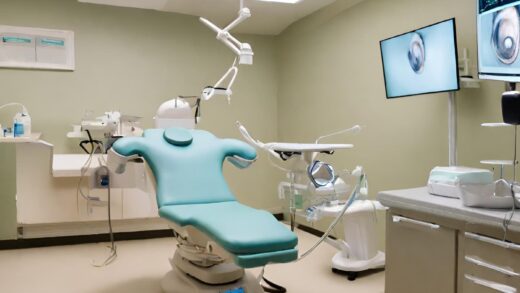Curious about LASIK for astigmatism correction? LASIK is a popular vision correction procedure, not just for nearsightedness and farsightedness but also for astigmatism. This guide covers what to expect when preparing for correction of astigmatism and details about the recovery process. Say goodbye to glasses and contacts!
Preparation for LASIK Surgery
Consultation with an Astigmatism Specialist
Embarking on the LASIK journey begins with a consultation with an astigmatism specialist. These specialized eye doctors possess the expertise to assess your eye health and determine if LASIK is a suitable option for you. During this consultation, you will have the opportunity to ask questions, discuss your concerns, and gain a better understanding of what LASIK can offer in terms of astigmatism correction.
Your astigmatism specialist plays a pivotal role in guiding you through the LASIK process, providing insights into potential risks, benefits, and personalized recommendations based on your unique eye condition.
Comprehensive Eye Examination
Have you ever wondered about the convenience of an online cataract test? While online vision tests are becoming more accessible, assessing cataracts typically requires a comprehensive eye examination by a qualified eye care professional. Online tests may offer some insights into your vision, but they can’t replace the expertise of an ophthalmologist in detecting cataracts and providing appropriate treatment options. In this article, we’ll explore the limitations of online vision tests in diagnosing cataracts and emphasize the importance of regular eye check-ups for accurate assessments of your eye health.
Customized Treatment Plan
One of the defining features of LASIK is its ability to provide personalized treatment. Based on the results of your comprehensive eye examination, your surgeon will craft a unique treatment plan that targets the precise areas of your cornea that need correction. This individualized approach ensures that the laser reshapes your cornea with exceptional precision, correcting your astigmatism effectively.
The LASIK Procedure
LASIK surgery for astigmatism is a relatively quick procedure, often lasting only a few minutes per eye. Here’s a more detailed overview of what to expect during the surgery:
Numbing of the Eye: Before the procedure begins, your surgeon will apply anesthetic eye drops to ensure you remain comfortable throughout the surgery. You may feel some pressure during certain parts of the procedure, but you should not experience any pain.
Creating a Corneal Flap: To access the underlying corneal tissue, a specialized laser is used to create a thin flap on the surface of your cornea. This flap is gently lifted to expose the cornea.
Reshaping the Cornea: The core of LASIK’s effectiveness lies in its ability to reshape the cornea. The laser, guided by a computer program, will sculpt the cornea to the desired curvature, correcting the astigmatism. The precision of the laser is remarkable, ensuring minimal disruption to the surrounding tissue.
Repositioning the Flap: Once the corneal reshaping is complete, the corneal flap is carefully repositioned. The remarkable thing about this step is that no stitches are required. The flap naturally adheres back into place.
Most patients experience immediate improvements in their vision after LASIK. However, it’s important to be aware that your vision may initially be slightly blurred as your eyes adapt to their new shape.
Recovery After LASIK Surgery
Post-Operative Care
After LASIK surgery for astigmatism, your surgeon will provide you with specific post-operative instructions. Following these instructions diligently is paramount for a smooth and successful recovery process. You may be prescribed medicated eye drops to prevent infection and reduce inflammation. Proper use of these drops is essential to ensure your eyes heal optimally.
Rest and Recovery
Plan to take it easy for a few days after LASIK. Resting your eyes and avoiding strenuous activities, such as heavy lifting or swimming, is crucial during this time. It’s common to experience sensations like dryness or mild scratchiness during the initial days after surgery. These discomforts are entirely normal and can typically be managed with prescribed lubricating eye drops.
Follow-Up Appointments
Your surgeon will schedule several follow-up appointments to monitor your progress. These appointments are an integral part of the LASIK journey. They serve the purpose of ensuring that your eyes are healing correctly and that your vision is improving as expected. It’s absolutely crucial not to skip these appointments, as they allow your surgeon to make any necessary adjustments and address any concerns promptly.
Enjoying Clear Vision
Many patients experience significant improvements in their vision within days to a week after LASIK for astigmatism. However, full vision stabilization may take a few weeks. It’s important to be patient and vigilant about any changes in your eyesight during this period. Your eye surgeon is your trusted partner in this journey, and you should not hesitate to reach out if you have any concerns or questions.
LASIK for astigmatism is a safe and highly effective procedure that can provide you with clearer vision and reduce your dependence on glasses or contact lenses. Proper preparation and post-operative care are instrumental in achieving a successful outcome. To explore LASIK as an option for improved vision, consult with an astigmatism specialist who can guide you through the process and help you make an informed decision.
It’s important to remember that individual experiences may vary, so it’s crucial to follow your eye surgeon’s guidance throughout the LASIK journey. LASIK for astigmatism has transformed the lives of countless individuals, offering them a brighter and clearer outlook on the world. The decision to undergo LASIK is a significant one, and with the right information and care, it can lead to a remarkable improvement in your quality of life.


